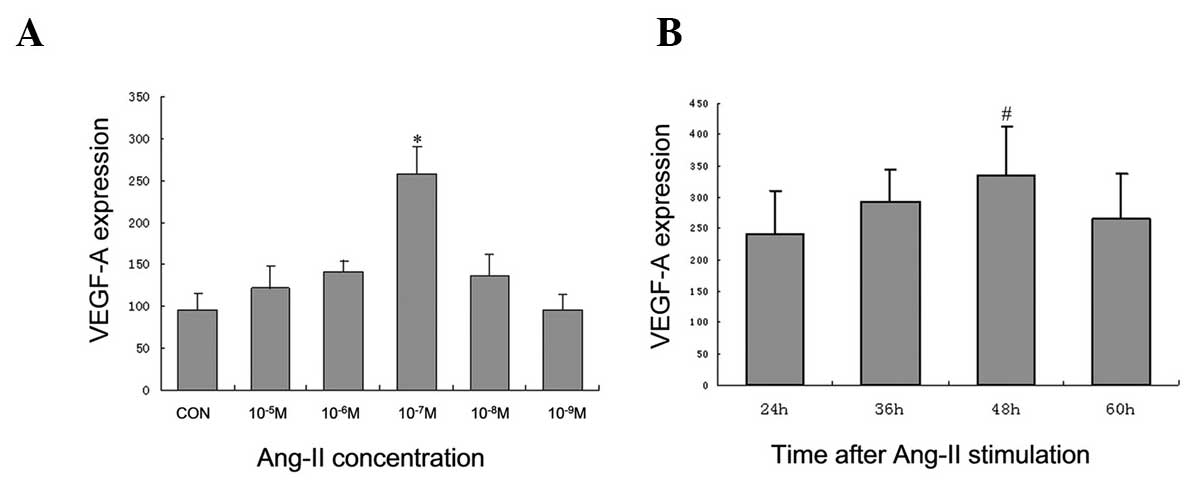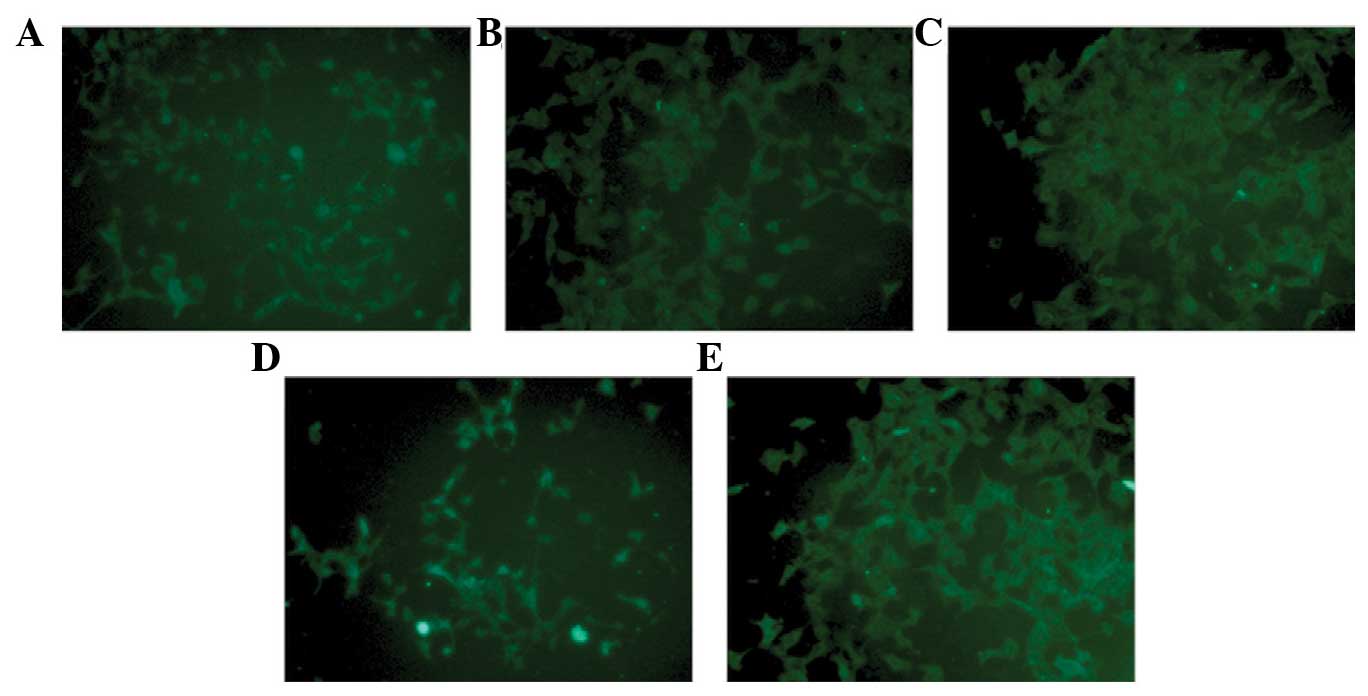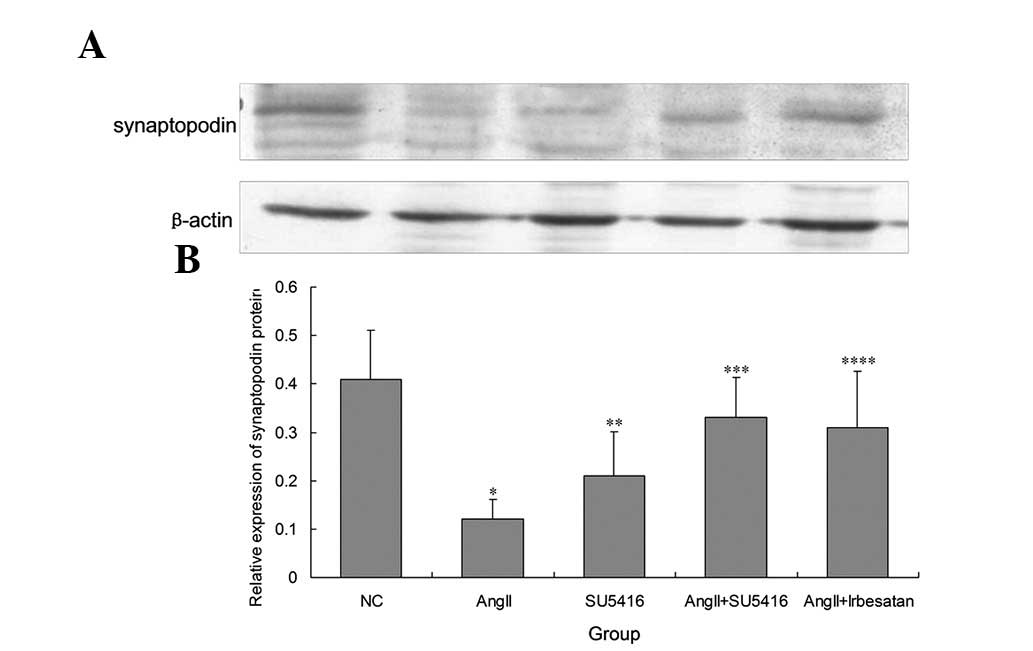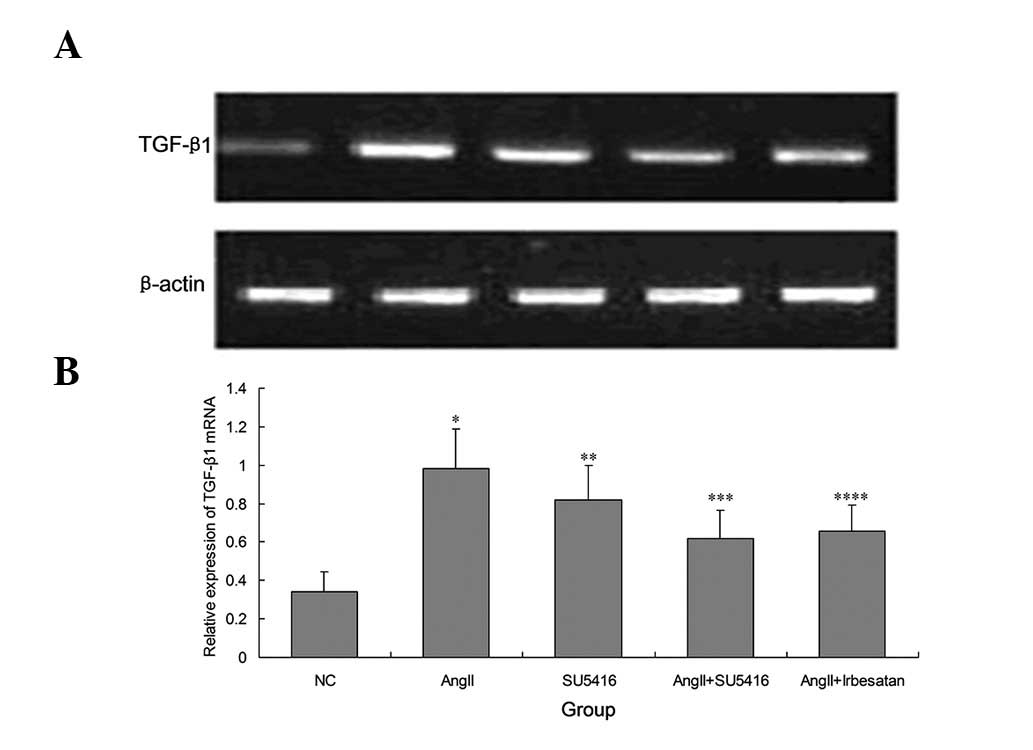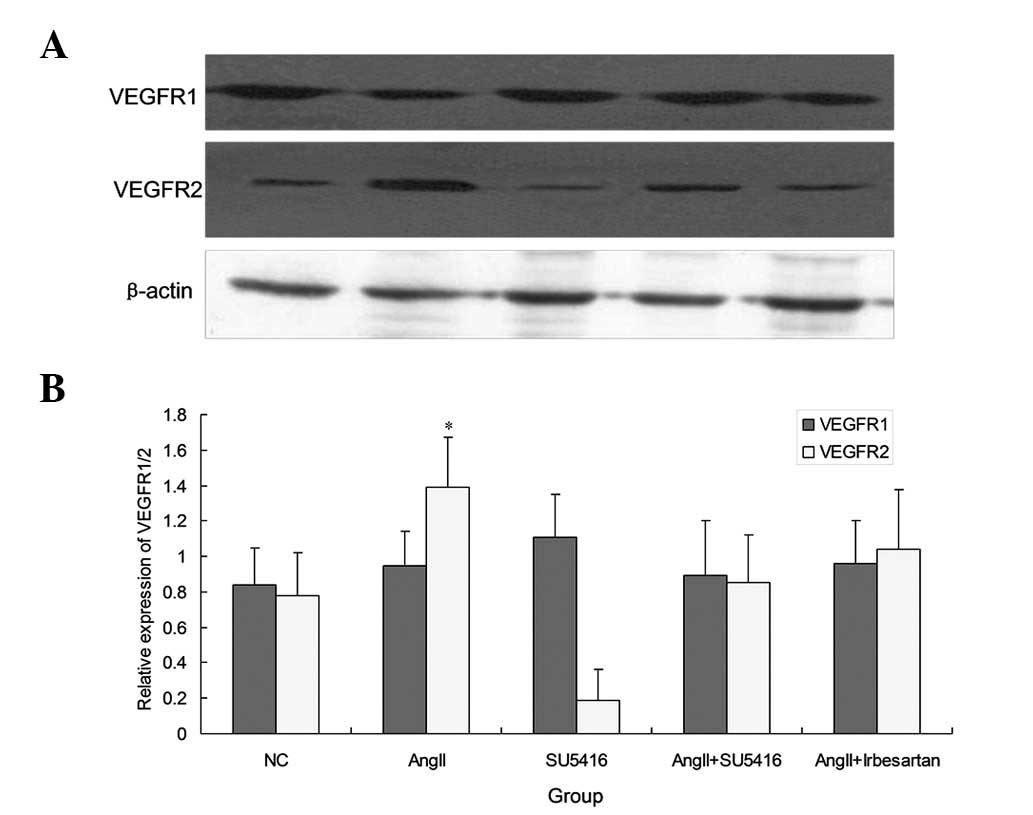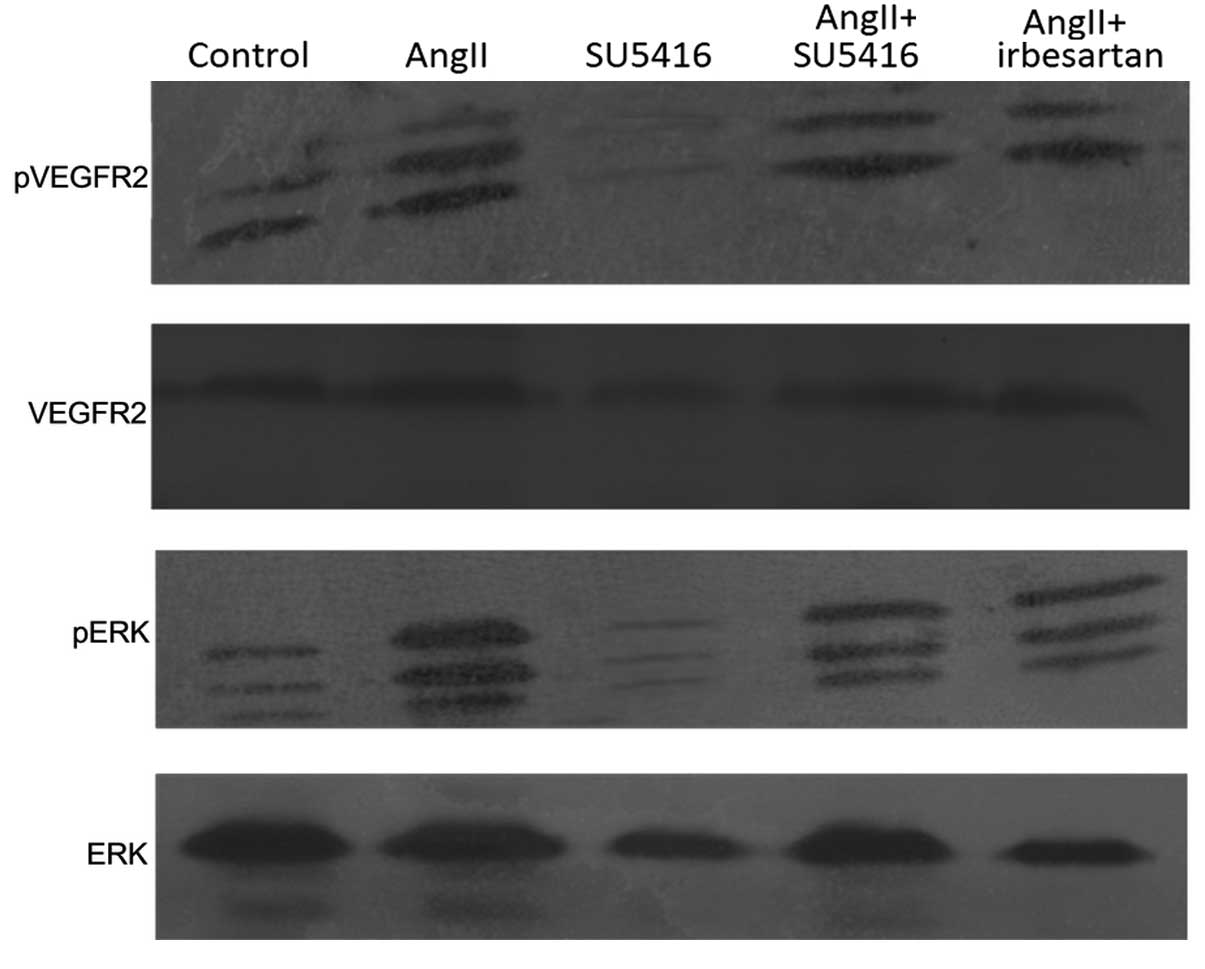|
1
|
Ma J, Rossini M, Yang HC, Zuo Y, Fogo AB
and Ichikawa I: Effects of podocyte injury on glomerular
development. Pediatr Res. 62:417–421. 2007. View Article : Google Scholar : PubMed/NCBI
|
|
2
|
Kim NH, Oh JH, Seo JA, et al: Vascular
endothelial growth factor (VEGF) and soluble VEGF receptor FLT-1 in
diabetic nephropathy. Kidney Int. 67:167–177. 2005. View Article : Google Scholar
|
|
3
|
Bates DO and Curry FE: Vascular
endothelial growth factor increases hydraulic conductivity of
isolated perfused microvessels. Am J Physiol. 271:H2520–H2528.
1996.PubMed/NCBI
|
|
4
|
Siemann DW, Brazelle WD and Jürgensmeier
JM: The vascular endothelial growth factor receptor-2 tyrosine
kinase inhibitor cediranib (Recentin; AZD2171) inhibits endothelial
cell function and growth of human renal tumor xenografts. Int J
Radiat Oncol Biol Phys. 73:897–903. 2009. View Article : Google Scholar : PubMed/NCBI
|
|
5
|
Maeshima Y and Makino H: Angiogenesis and
chronic kidney disease. Fibrogenesis Tissue Repair. 3:13–30. 2010.
View Article : Google Scholar : PubMed/NCBI
|
|
6
|
Foster RR, Hole R, Anderson K, et al:
Functional evidence that vascular endothelial growth factor may act
as an autocrine factor on human podocytes. Am J Physiol Renal
Physiol. 284:F1263–F1273. 2003. View Article : Google Scholar : PubMed/NCBI
|
|
7
|
Baharivand N, Zarghami N, Panahi F, et al:
Relationship between vitreous and serum vascular endothelial growth
factor levels, control of diabetes and microalbuminuria in
proliferative diabetic retinopathy. Clin Ophthalmol. 6:185–191.
2012.PubMed/NCBI
|
|
8
|
Ho C, Hsu YC, Tseng CC, et al: Simvastatin
alleviates diabetes-induced VEGF-mediated nephropathy via the
modulation of Ras signaling pathway. Ren Fail. 30:557–565. 2008.
View Article : Google Scholar : PubMed/NCBI
|
|
9
|
Doi K, Leelahavanichkul A, Hu X, et al:
Pre-existing renal disease promotes sepsis-induced acute kidney
injury and worsens outcome. Kidney Int. 74:1017–1025. 2008.
View Article : Google Scholar : PubMed/NCBI
|
|
10
|
Celletti FL, Waugh JM, Amabile PG, et al:
Vascular endothelial growth factor enhances atherosclerotic plaque
progression. Nat Med. 7:425–429. 2001. View
Article : Google Scholar : PubMed/NCBI
|
|
11
|
Ferrara N: Role of vascular endothelial
growth factor in physiologic and pathologic angiogenesis:
therapeutic implications. Semin Oncol. 29(Suppl 16): 10–14. 2002.
View Article : Google Scholar
|
|
12
|
Sugimoto H, Hamano Y, Charytan D, et al:
Neutralization of circulating vascular endothelial growth factor
(VEGF) by anti-VEGF antibodies and soluble VEGF receptor 1 (sFlt-1)
induces proteinuria. J Biol Chem. 278:12605–12608. 2003. View Article : Google Scholar : PubMed/NCBI
|
|
13
|
Eremina V, Jefferson JA, Kowalewska J, et
al: VEGF inhibition and renal thrombotic microangiopathy. N Engl J
Med. 358:1129–1136. 2008. View Article : Google Scholar : PubMed/NCBI
|
|
14
|
Shankland SJ, Pippin JW, Reiser J and
Mundel P: Podocytes in culture: past, present, and future. Kidney
Int. 72:26–36. 2007. View Article : Google Scholar : PubMed/NCBI
|
|
15
|
Krtil J, Pláteník J, Kazderová M, et al:
Culture methods of glomerular podocytes. Kidney Blood Press Res.
30:162–174. 2007. View Article : Google Scholar : PubMed/NCBI
|
|
16
|
Liang XB, Ma LJ, Naito T, et al:
Angiotensin type 1 receptor blocker restores podocyte potential to
promote glomerular endothelial cell growth. J Am Soc Nephrol.
17:1886–1895. 2006. View Article : Google Scholar : PubMed/NCBI
|
|
17
|
Mezrich JD, Nguyen LP, Kennedy G, et al:
SU5416, a VEGF receptor inhibitor and ligand of the AHR, represents
a new alternative for immunomodulation. PLoS ONE. 7:e445472012.
View Article : Google Scholar : PubMed/NCBI
|
|
18
|
Westenskow PD, Kurihara T, Aguilar E, et
al: Ras pathway inhibtion prevents neovascularization by repressing
endothelial cell sprouting. J Clin Invest. 123:4900–4908. 2013.
View Article : Google Scholar : PubMed/NCBI
|
|
19
|
Veron D, Bertuccio CA, Marlier A, et al:
Podocyte vascular endothelial growth factor (Vegf164)
overexpression causes severe nodular glomerulosclerosis in a mouse
model of type 1 diabetes. Diabetologia. 54:1227–1241. 2011.
View Article : Google Scholar : PubMed/NCBI
|
|
20
|
Nasu T, Maeshima Y, Kinomura M, et al:
Vasohibin-1, a negative feedback regulator of angiogenesis,
ameliorates renal alterations in a mouse model of diabetic
nephropathy. Diabetes. 58:2365–2375. 2009. View Article : Google Scholar : PubMed/NCBI
|
|
21
|
Kim W, Moon SO, Lee SY, et al:
COMP-angiopoietin-1 ameliorates renal fibrosis in a unilateral
ureteral obstruction model. J Am Soc Nephrol. 17:2474–2483. 2006.
View Article : Google Scholar : PubMed/NCBI
|
|
22
|
Eremina V and Quaggin SE: The role of
VEGF-A in glomerular development and function. Curr Opin Nephrol
Hypertens. 13:9–15. 2004. View Article : Google Scholar : PubMed/NCBI
|
|
23
|
Hohenstein B, Colin M, Foellmer C, et al:
Autocrine VEGF-R loop on podocytes during glomerulonephritis in
humans. Nephrol Dial Transplant. 25:3170–3180. 2010. View Article : Google Scholar : PubMed/NCBI
|
|
24
|
Yanagida-Asanuma E1, Asanuma K, Kim K, et
al: Synaptopodin protects against proteinuria by disrupting
Cdc42:IRSp53: Mena signaling complexes in kidney podocytes. Am J
Pathol. 171:415–427. 2007. View Article : Google Scholar : PubMed/NCBI
|
|
25
|
de Zoysa JR and Topham PS: Podocyte
biology in human disease. Nephrology (Carlton). 10:362–367. 2005.
View Article : Google Scholar
|
|
26
|
Asanuma K, Kim K, Oh J, et al:
Synaptopodin regulates the actin-bundling activity of alpha-actinin
in an isoform-specific manner. J Clin Invest. 115:1188–1198. 2005.
View Article : Google Scholar : PubMed/NCBI
|
|
27
|
Faul C, Asanuma K, Yanagida-Asanuma E, Kim
K and Mundel P: Actin up: regulation of podocyte structure and
function by components of the actin cytoskeleton. Trends Cell Biol.
17:428–437. 2007. View Article : Google Scholar : PubMed/NCBI
|
|
28
|
Faul C, Donnelly M, Merscher-Gomez S, et
al: The actin cytoskeleton of kidney podocytes is a direct target
of the anti-proteinuric effect of cyclosporine A. Nat Med.
14:931–938. 2008. View
Article : Google Scholar : PubMed/NCBI
|
|
29
|
Izzedine H, Massard C, Spano JP, et al:
VEGF signaling inhibition-induced proteinuria: Mechanisms,
significance and management. Eur J Cancer. 46:439–448. 2010.
View Article : Google Scholar
|
|
30
|
Ichikawa I, Ma J, Motojima M and Matsusaka
T: Podocyte damage damages podocytes: autonomous vicious cycle that
drives local spread of glomerular sclerosis. Curr Opin Nephrol
Hypertens. 14:205–210. 2005. View Article : Google Scholar : PubMed/NCBI
|
|
31
|
Zhao Q, Egashira K, Inoue S, et al:
Vascular endothelial growth factor is necessary in the development
of arteriosclerosis by recruiting/activating monocytes in a rat
model of long-term inhibition of nitric oxide synthesis.
Circulation. 105:1110–1115. 2002. View Article : Google Scholar : PubMed/NCBI
|
|
32
|
Pan P1, Fu H, Zhang L, et al: Angiotensin
II upregulates the expression of placental growth factor in human
vascular endothelial cells and smooth muscle cells. BMC Cell Biol.
11:362010. View Article : Google Scholar : PubMed/NCBI
|
|
33
|
Pupilli C, Lasagni L, Romagnani P, et al:
Angiotensin II stimulates the synthesis and secretion of vascular
permeability factor/vascular endothelial growth factor in human
mesangial cells. J Am Soc Nephrol. 10:245–255. 1999.PubMed/NCBI
|
|
34
|
Kang YS, Park YG, Kim BK, et al:
Angiotensin II stimulates the synthesis of vascular endothelial
growth factor through the p38 mitogen activated protein kinase
pathway in cultured mouse podocytes. J Mol Endocrinol. 36:377–388.
2006. View Article : Google Scholar : PubMed/NCBI
|



